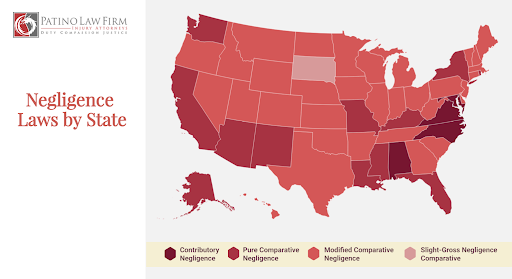You’ve likely heard that you can file for compensation if you were in an accident that wasn’t your fault, but what if it was? Can you claim compensation if you were responsible?
In Texas, the answer is, potentially, yes.
Negligence laws vary by state, and this impacts how much compensation — if any — you’re entitled to.
There are two main types of negligence law: contributory negligence and comparative negligence, with the latter split into two further categories — pure comparative and modified comparative. There is one further type for a single state in the U.S., which we’ll dig into below.

